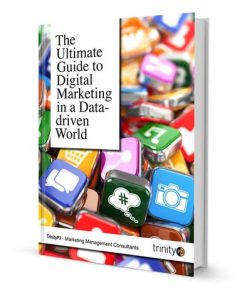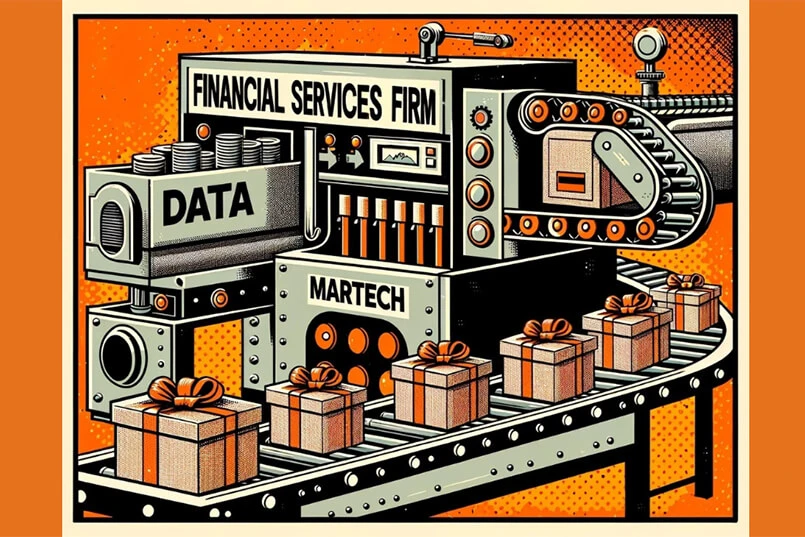Welcome to the 10th and final Chapter of “The Ultimate Guide to Digital Marketing in a Data-driven World”. If you missed Chapter 9 you can read it here.
This is one of a series of 11 posts or if you want to get the entire book in one hit you can download the full book here.
Well, that wasn’t so bad was it? Nine chapters of gold to help you succeed in digital and data-driven marketing. Let’s quickly recap the essence of each chapter of this guide.
Chapter 1: The rise and rise of digital marketing in a data-driven world
Chapter 1 highlighted the ever-changing nature of digital and data. Your mission will be to harness the statistics and opportunities by grounding them in business reality. As the digital world is changing every day, you will need to keep abreast of the major themes and assess the impacts on your business. Ensure you have set up your key information agents and sources of wisdom.
Chapter 2: How digital marketing fits into the marketing mix
Chapter 2 demystified digital channels and demonstrated how digital fits into the marketing mix. It also posed a big question – Should you create a customer budget?
Chapter 3: How the best of the best approach digital marketing
Chapter 3 challenged conventional business operation in silos. It then highlighted the need for a new model of collaboration, ownership and knowledge sharing.
Chapter 4: Launch with a rock-solid foundation
Chapter 4 argued for the need to throw away the old sequential marketing funnel when planning, and provided an example of how to consider customer journeys and non-sequential cycles of discovery.
Chapter 5: Listening to customers to remain relevant
Chapter 5 asserted the need to shift to a customer-centric plan as opposed to relying on the outdated business or product-centric approach. It also explained the impact this will have on your segmentation and data profiling.
Chapter 6: The new four-pillar structure for developing digital ideas
Chapter 6 introduced the development of digital ideas in four dimensions: creative, compelling story, technology and data science. It advocated favouring this over the traditional TV idea that is pushed into various digital channels like a square peg into a round hole.
Chapter 7: The never-ending campaign
Chapter 7 explained the fact that you will ‘always be on’ in digital channels. Therefore, you need to put in place a content-marketing framework for never-ending campaigning, along with escalation processes and a crisis-management plan (in case you require them).
Chapter 8: Understanding the art and science of performance data
Chapter 8 demystified the wealth of data and arrays of metrics that can be utilised for your plan. Remember that you will need to identify the most relevant, most potent ones for your planning and ongoing-optimisation purposes, rather than simply drowning in data.
Chapter 9: Educating your brand world
Chapter 9 outlined how to ensure that key stakeholders and the C-suite provide input into, and ultimately take ownership of, your digital and data plans.
Your 100-day plan
Now before we unleash you, we believe that to close the loop on this guide, we should sum it up in a straightforward 100-day plan. As we’re sure you will find, everyone is now a digital marketing expert, so you will need a structured planning process in order to develop your own plan and stay on track.
The table below serves as a framework for you to populate. The plan has been split into increments of five days (one standard working week), with the final day marking the finalisation of the specified action. Also detailed are the deliverables.
| Day | Week | Action area | Deliverable |
| 1 | 1 | Stakeholder identification | List of team members, from C-suite through to key stakeholders in your business |
| 5 | 1 | World of digital | Defined view of the world of digital and gaps where you may need further research or SMEs |
| 10 | 2 | Resources | Identification of all internal resources and external suppliers to deliver on digital marketing activity |
| 15 | 3 | Data audit 1 | Data audit that identifies all key touch points for capturing data |
| 20 | 4 | Current structures and plans | Detail of the current, top-level state of play for marketing, digital and data activity. Identification of gaps and opportunities to explore in greater detail |
| 25 | 5 | Current processes | Identification of current processes for delivering digital and data activity within your business |
| 30 | 6 | Data audit 2 | Data audit identifying all data variables being utilised across the business |
| 35 | 7 | Internal immersion 1 | Immersion of stakeholders and the C-suite in your helicopter view of the first 30 days |
| 40 | 8 | Process evolution | Identification of the re-engineered collaboration construct to implement |
| 45 | 9 | Data mining | Deep-dive into the current segmentation methodology, data variables and measures that are in place |
| 50 | 10 | Internal immersion 2 | Subject matter presentations for C-suite and key stakeholders |
| 55 | 11 | Stakeholder interviews | Deep-dives with key stakeholders to identify needs, hurdles and opportunities |
| 60 | 12 | Collaboration planning 1 | Customer-centric planning workshops |
| 65 | 13 | Collaboration planning 2 | Customer-centric planning workshops |
| 70 | 14 | Digital framework | Alignment of the territory for your plan and framework |
| 75 | 15 | Content requirements | Identification of content marketing requirements |
| 80 | 16 | Resource requirements | Identification of resource requirements (internal and external) |
| 85 | 17 | Measurement criteria | Identification of key measurement criteria and the impact on reporting frameworks |
| 90 | 18 | Internal immersion 3 | Stakeholder immersion to refine hurdles/opportunities |
| 95 | 19 | Finalisation of plan | Final stakeholder alignment |
| 100 | 20 | Implementation of plan | Plan is put into action |
Glossary
CDJ – consumer decision journey
CRM – customer relationship management
CRO – conversion rate optimisation
DAUs – daily active users
DMCA – Digital Millennium Copyright Act
FMCGs – fast-moving consumer goods
FTA – free-to-air (TV)
HR – human resources
IPOs – initial public offerings
KM – knowledge management
KPIs – key performance indicators
MAUs – monthly active users
NFC – near field communication
NPS – net promoter score
PDAs – personal digital assistants
PPC – pay-per-click (ads)
RFM – recency, frequency, monetary (customer segmentation model)
RFML – recency, frequency, monetary, length of relationship (new customer segmentation model)
ROI – return on investment
SEA – search engine advertising
SEO – search engine optimisation
SERPs – search engine results pages
SME – subject matter expert
UX – user experience
YOY – year-on-year (profit growth)
If you would like to read the full book you can go to this page and request your copy of the Ultimate Guide to Digital Marketing in a Data-driven World:
This comprehensive Guide will not only demystify the world of digital and data by explaining how it works, it will also help you put some logic back into your marketing approach.
There are no bells, no whistles, no hype.
This Guide simply aims to help marketers get back to basics, business logic and follow the path from confusion to clarity…





